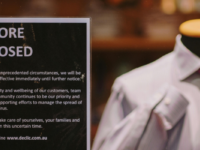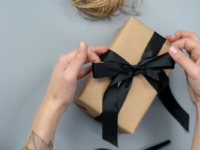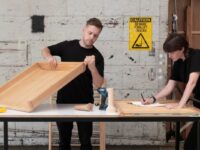This week, we talk to Chrissy Dupé, a mother and the entrepreneur behind Gigi Bib, the world’s only wake-proof and accessory-compatible baby and toddler bib range. What caught the market’s attention was Gigi Bib’s unique one-handed clip that is easy to open and close with just the thumb and forefinger, making the transition from feeding to settling their baby to sleep much easier for parents.
ISB: What is the inspiration behind Gigi Bib?
CD: My daughter Gisèle (Gigi) inspired me to create Gigi Bib. She was really difficult to settle as a baby. She would cry for hours every night. The only way to get her to sleep was to feed her, but taking off her bib would always wake her again. Back then, I didn’t know Gigi had a rare genetic condition, I just assumed she was a tricky sleeper, like so many babies. I tried so many bibs but I couldn’t find one that was easy to remove with one hand while nursing her, without waking her up. So, I set about designing my own.
ISB: How important is the element of design for your product?
CD: Good design is critical. I wanted to make sure that Gigi Bib effectively solved a real problem for parents. And it took two years and several roads of refinements to get it right. The bib’s provisionally patented ‘one-handed’ clip was created with input from some of the country’s best designers. Many hours of design engineering went into striking the perfect balance between form and functionality. And it has paid off, with Gigi Bib recently winning a Good Design Award, the top accolade for innovative product design in Australia.
ISB: What has been the most challenging aspect of operating this business and how do you overcome it?
CD: Building my own business has been incredibly rewarding. But I have also felt quite isolated at times. There are so many decisions you have to make daily, and no real right or wrong answers in many cases. It can be overwhelming. There’s no one else to defer to for final sign off, you’re it. I have overcome this by reaching out to others and forming networks. I’ve engaged business mentors, joined small-business associations, and done some amazing courses for women entrepreneurs, which have allowed me to connect with others who’ve been where I am. It has been really important for me to talk to others who get what it’s like.
ISB: You’re also passionate about supporting those suffering from living with a rare disease; in what ways do you show such support?
CD: My daughter Gigi was born with a very rare genetic condition called Mosaic Trisomy 20. The doctors can’t tell us much about what it means for her future, which is very hard to hear as a parent. Through my family’s journey I’ve become passionate about supporting people living with additional needs and their families. So, we donate 10 cents from every sale to Rare Voices Australia, the national peak body that advocates for the two million Australians living with a rare disease.
ISB: How do you envision Gigi Bib growing for the next couple of years?
CD: Over the next year, I’ll be focusing on establishing Gigi Bib within the Australian market and growing our brand and customer base. Beyond that, I’ll be looking at international expansion and exploring options for applying our one-handed clip to adaptive wear and other accessible products for people living with additional needs. I think it has the potential to be particularly helpful for those living with conditions which affect one side of their body, such as Hemiplegia, Hand Difference and Stroke. My vision is to help to promote independence for people living with additional needs, like Gigi. Ultimately, I would like to set up a foundation which funds research into rare diseases, so that families like ours can find the answers and support they need.
ISB: What advice can you give to would-be entrepreneurs who are looking to bring their ideas to life?
CD: If you have an idea and it solves a real problem that you have, that’s the first step. Then you need to ask others if they have the same problem. What are their ‘pain points’? What frustrates them? What can’t they do that they want to be able to do? Then use that to form the basis for your design brief. Always start with the problem you’re trying to solve because people don’t buy products, they buy solutions. I would also say be prepared to invest a significant amount of money. Designing a product is expensive, and there are no guarantees it will work. So, you have to have a pretty big appetite for risk. Finding a good intellectual property lawyer is also important if you’re planning on patenting your idea.
















